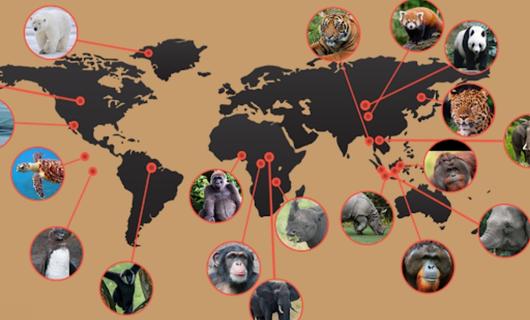People have discovered evidence of life in other worlds, and the world is changing at an unfathomably rapid rate. Do you know the total number of animals in the world?
Many people wonder how many species there are in the world that humans have not yet discovered when they see a fantastic animal.
Though they have done much research over the years, there is still a good likelihood that certain riddles still need to be solved.
Entering the world of exploration stimulates you and opens many doors to interesting new information. The most amazing creatures that can continually astound scientists are animals.
Science has only been able to offer estimates up to this point, and the amounts vary greatly.
Nevertheless, there is a reasonable likelihood that the real world contains many marvels and notable species that still need to be discovered. One to two million species are thought to exist in the animal kingdom alone. However, some estimates put the figure as high as 50 million.
We'll talk about how many species of animals have been discovered in this section. Therefore, let's jump right into the details.
Estimated Number of Animals in the World
We can only estimate the number of animals in the globe by several computations. But it makes perfect sense that this figure can only partially be corrected.
The most precise estimate of the total number of species on Earth comprises 2.2 million species residing in the deep ocean and 6.5 million species found on land.
Based on a tried-and-true analytical method, this figure narrows the range of earlier estimates. It was once believed that there were between 3 and 100 million species on Earth.
Animal Species Around the World
There are millions of distinct animal species, and as scientists discover new information, the number of species is ever-changing. Animals, divided into the vertebrate and invertebrate groups, make up more than 75% of all species on Earth.

Animals without a backbone are known as invertebrates, and those with a backbone are known as vertebrates. On the other hand, most invertebrates fall under the phylum Arthropoda, whereas vertebrates are a part of the phylum Chordata.
1. Mammals
It's a nice fact that mammals, which include humans, are a class of vertebrate animals.
The class Mammalia of vertebrates, which includes mammals, has three middle ear bones, a neocortex, fur or hair, and mammary glands, which in females produce milk for sustaining their young.
The mammalian genus is one of the most prosperous orders of vertebrate creatures. They are a diverse group of beings with between 5,000 and 5,500 species that have developed to endure in various environments.
Although certain mammal species can be found in freshwater and ocean environments, most are on land. An essential aspect of the global animal population.
2. Reptiles
Animals that breathe air and have unique skin made of scales, bone plates, or a combination of both are known as reptiles. They all lay eggs, which sets them apart from other cold-blooded species.
3. Amphibians
Animals with cold blood and a preference for water, amphibians live on both lands and in the water. Amphibians can survive in both settings, in contrast to other species that can either exist on land or in water.
These animals have gills at birth; some lose them as they age, while others keep them for their lives.
Experts believe that since most amphibians have four legs and descend from lobe-finned fish, this is likely why they still require a damp environment.
4. Fish
The term "fish" describes a hugely varied class of aquatic animals. The number of fish species is similar to the number of vertebrate species. The number of fish species is expected to exceed that of other vertebrates.
Fish are aquatic creatures with gills but no limbs with fingers or toes. Fish may be found in various settings and come in various sizes and shapes, given how many species have been categorised as fish.
5. Invertebrate
An invertebrate is a creature with many cells but no backbone. More than 95% of animal species in the world are invertebrates. The way they live and reproduce determines which habitats they can thrive in.
Invertebrates can be found in all environments, including the arctic regions, oceans, and rain forests.
The number of species of invertebrates is approximately 1.5 million. However, according to scientific estimates, up to 30 million invertebrate species may still exist. A strong candidate to win the title of most animals in the world.
6. Birds
Since they have wings and feathers, birds are regarded as vertebrates. Birds can most easily be distinguished from other animals by their wings.
Penguins and other birds can readily exist on land and water like ducks. But inside it, they are unable to breathe. They are only able to swim at the surface.
Every bird has wings or flippers that it can use for swimming, displaying aggression, or engaging in mating rituals.



Leave me a comment
Thank you for reading my post, if you want to leave a comment, you can do so below.